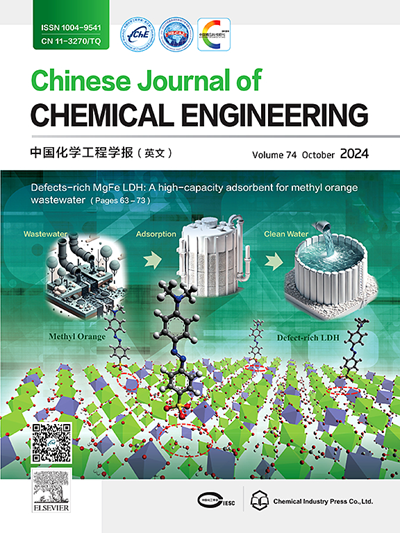Synergetic mechanism between corn stalk biochar and coal pulping in coal-water slurry
IF 3.7
3区 工程技术
Q2 ENGINEERING, CHEMICAL
引用次数: 0
Abstract
The multipath application of green resources needs to be realised under the carbon neutrality goal. Worldwide, biomass is a resource in urgent need of treatment. In this paper, corn stover biomass (YM) or biochar with different particle sizes (YMF or YMX) was added during the preparation of coal-water slurry to investigate its effect on the performance of coal-water slurry and the micro-mechanism. The results showed that the fixed viscosity concentration of coal-water slurry (CYWS) with YM was only 47.42%, and the flowability was 49.9 mm, which made the slurry performance poor. The fixed viscosity concentration of coal-water slurry (CFWS) blended with YMF and coal-water slurry (CXWS) blended with YMX increased by 10.41% and 14.24%, respectively, compared with CYWS. Meanwhile, CXWS had the lowest thixotropy and yield stress, with a yield stress of only 16.13 Pa, which was 77.31 Pa lower than that of CYWS. This indicates that YMX treated by charring and milling is more favorable to be blended with coal to prepare coal-water slurry. This is due to the enhanced hydrophilicity and electronegativity of YMX. The enhanced hydrophilicity reduces the tendency to form three-dimensional networks in coal-water slurry, while the enhanced electronegativity improves the electrostatic repulsion between particles, which is beneficial to the dispersion of particles. In the subsequent EDLVO analyses, the same idea was proved.

玉米秸秆生物炭与水煤浆制浆的协同作用机理
绿色资源的多路径应用需要在碳中和目标下实现。在世界范围内,生物质是一种急需处理的资源。本文在制备水煤浆过程中加入玉米秸秆生物质(YM)或不同粒径的生物炭(YMF或YMX),研究其对水煤浆性能的影响及其微观机理。结果表明:含YM的水煤浆(CYWS)的固定粘度浓度仅为47.42%,流动性为49.9 mm,浆体性能较差;与CYWS相比,掺YMF的水煤浆(CFWS)和掺YMX的水煤浆(CXWS)的固定黏度浓度分别提高了10.41%和14.24%。同时,CXWS的触变性和屈服应力最低,仅为16.13 Pa,比CYWS低77.31 Pa。说明经炭化磨粉处理的YMX更有利于与煤混合制备水煤浆。这是由于YMX的亲水性和电负性增强所致。亲水性的增强降低了水煤浆中形成三维网络的倾向,而电负性的增强提高了颗粒间的静电斥力,有利于颗粒的分散。在随后的EDLVO分析中,同样的想法得到了证明。
本文章由计算机程序翻译,如有差异,请以英文原文为准。
求助全文
约1分钟内获得全文
求助全文
来源期刊

Chinese Journal of Chemical Engineering
工程技术-工程:化工
CiteScore
6.60
自引率
5.30%
发文量
4309
审稿时长
31 days
期刊介绍:
The Chinese Journal of Chemical Engineering (Monthly, started in 1982) is the official journal of the Chemical Industry and Engineering Society of China and published by the Chemical Industry Press Co. Ltd. The aim of the journal is to develop the international exchange of scientific and technical information in the field of chemical engineering. It publishes original research papers that cover the major advancements and achievements in chemical engineering in China as well as some articles from overseas contributors.
The topics of journal include chemical engineering, chemical technology, biochemical engineering, energy and environmental engineering and other relevant fields. Papers are published on the basis of their relevance to theoretical research, practical application or potential uses in the industry as Research Papers, Communications, Reviews and Perspectives. Prominent domestic and overseas chemical experts and scholars have been invited to form an International Advisory Board and the Editorial Committee. It enjoys recognition among Chinese academia and industry as a reliable source of information of what is going on in chemical engineering research, both domestic and abroad.
 求助内容:
求助内容: 应助结果提醒方式:
应助结果提醒方式:


